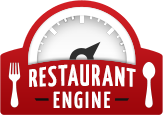How To Avoid Website Navigation Mistakes

Enlist the help of others to review your restaurant website’s navigation system.
Is it easy to navigate your restaurant website? Do you provide website visitors a good customer experience?
These two questions are especially important in an era of multiple screen sizes and always-on web browsing.
How you design your website’s navigation and the structure of your website are vital for usability and search engine optimization.
In this article, we look at how to avoid website navigation mistakes, so your restaurant is working at its optimal performance level.
Use Legible Fonts
One of the most important parts of your website navigation is its legibility.
Yet, it can be confusing because your website visitors may be viewing your site on a desktop computer, tablet or smartphone. This can leave you wondering what size is the right size.
The absolute minimum font size for your website navigation is 12 pixels. If you go smaller than this, most of your visitors won’t be able to read it regardless of their device size.
Depending on the number of links in your menu bar, we recommend using a font size of 12 – 16 pixels for the best readability.
Your best bet is to test your site on a number of devices, so you ensure your fonts are legible.
Use Actual Text
In the past, website designers used buttons for links in the menu bar. This is a tactic better left in the past.
Today, you want to use actual text instead of icons or buttons because it’s better for your website visitors and for your search engine optimization.
Search engines use the text in your menu bar as they crawl your site. They use this text to determine the most important parts of your site.
In addition, using images, buttons or icons in your menu bar slows down your site unnecessarily.
Lastly, you want to make sure your text has enough contrast with the rest of the site. For example, if your site colors are beige and light brown, you don’t want to use those colors for your menu.
Use a strong dark color for readability. For example, use a dark font color on a light background or a light text on a dark background.
Include a Search Function
Put your navigation to work for you and don’t leave out the search box.
It’s a good idea to keep your search box at the top of your site, and your menu is the perfect place. Doing this adds greatly to your site’s user experience and allows your diners to find what they’re looking for quickly and with ease.
Help your search box stand out by adding a magnifying glass next to the words, “Search Here.” You can also change its colors to separate it from your regular menu items.
Consider Breadcrumbs
While not technically part of your site’s main menu and website navigation, bread crumbs are part of your overall site usability and navigation.
Breadcrumbs are a trail map for your website visitors. They’re especially helpful for people who get deep into your website and want to get back several pages but aren’t sure how to do so.
A breadcrumb might look like this: Home > Menu > Dinner Items > Chicken > Chicken Alfredo.
Consider using bread crumbs because they are so helpful to your users. They also can aid your search engine optimization as they continue to help search engines figure out which pages on your restaurant website are the most important.
Use the Right Amount of Options
Another common website navigation mistake is using too many options, or on the flip side, not having enough options.
If you have too many choices in your website menu, you make it hard for visitors to decide where to go. You’ll wear them out, and they may just bounce right off your site. (tweet this)
Try to keep your main menu navigation to just seven items.
You want to avoid drop down menus as well as they often confuse visitors. Consider using a mega menu instead. This menu spreads out and makes it easier for visitors to find what they’re looking for.
Conversely, you want to make sure you have enough options in your website menu.
If you have too few choices, then you most certainly would need to revert to a drop-down menu, decreasing your website’s usability.

Restaurant websites with solid, easy-to-use navigation convert better than others.
Don’t Get Too Creative
Instead of getting creative with your website navigation, get creative with your website imagery.
You’ll be better off with creative, professional photos then you will be with a menu that’s so creative it’s confusing.
Name your links so your website visitors know just what they’ll get when they click on the menu item. Avoid creativity here because it could lead to your website visitors bouncing right off your site.
Use wording in your links that makes sense and sends users to the right pages.
Link Your Logo
Did you know you can leave the words, “Home,” out of your main menu?
Instead, make sure to link your logo back to your home page. This is a best practice, and one you should use on your restaurant website.
Add a Site Map
The last navigation mistake you want to avoid is not adding a site map to your restaurant website.
The site map is the ultimate directory to your website, and it speaks directly to the search engines. All of your pages with the links to each are included in your site map, and this helps search engines crawl your site.
The Take-Away
Take these tips and suggestions and pull up your restaurant website. Ask yourself objectively if you’re meeting usability standards. Then, ask friends, family and staff members to take a tour of your website and see what they think.
The user experience on your website is integral to the success of your restaurant, and it starts with your menu.
Website visitors spend more time on sites where it’s easy to get around. They are more apt to make a purchase and interact with your restaurant.
What’s more, if your site is easy to navigate, it ranks higher on search engine listing pages. What does this mean for you?
It means Google is rewarding you for your site’s usability, and more people will find your restaurant and visit your website.
Ultimately, solid website navigation can lead to more website visitors and more conversions which means more people dining in your restaurant. (tweet this)
At Restaurant Engine, not only do we create great, responsive websites, but you can count on us to create a website that drives business to your restaurant and edges you above the competition by using mobile-friendly design with a terrific user experience. Ready to take the plunge and create a website with an online menu, blog and beautiful photos? Get your free website consultation today!
Images: Climate KIC and chuttersnap on Unsplash


Leave a Reply